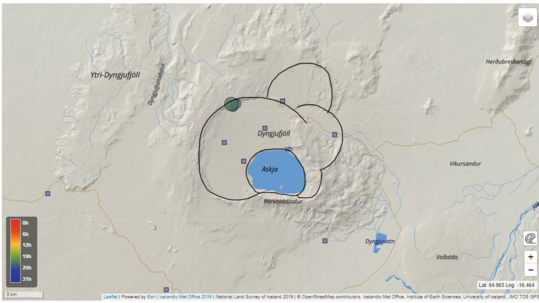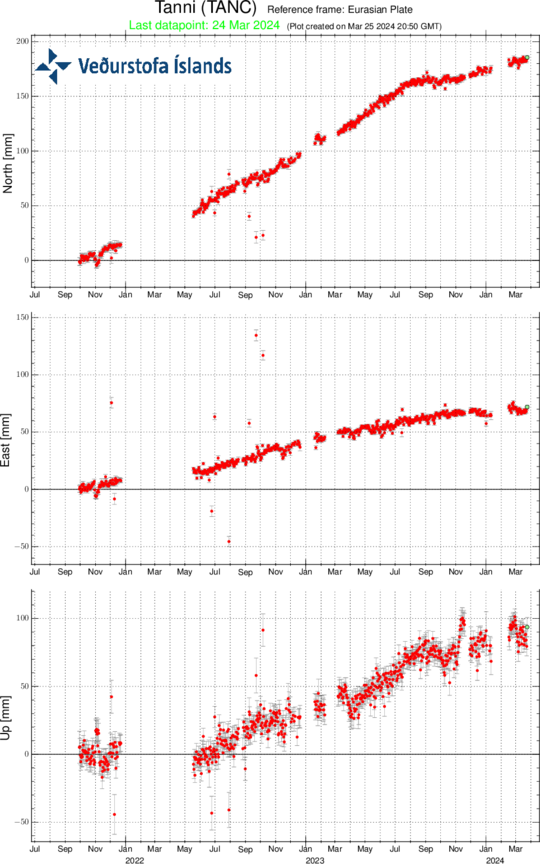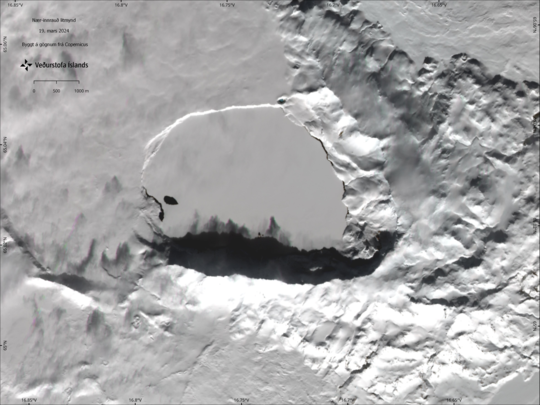Seismic swarm in the northwest past of the caldera in Askja yesterday
Deformation continues in the area
Yesterday (25 March) a seismic swarm occurred in the NW part of the Askja caldera. About 30 earthquakes were detected between 08.00UTC and midday. The largest earthquake detected had a magnitude M3,5 at a depth of about 5 km. Three earthquakes with magnitudes between M2 and M2,5 were also detected, the rest of the activity was characterized by smaller events. Overall, the seismic activity in the Askja has been quite stable between months and unchanged until yesterday. Looking back, we can see that earthquakes with magnitude above M3 were detected in January 2022 and October 2021.

The map shows the location of the earthquake swarm yesterday on the NW-ern rim of Askja caldera. Blue boxes mark the locations of GNSS monitoring instruments.
Deformation at Askja continued with a stable rate for two years since the end of summer 2021. In the last autumn, the GNSS data indicated though a change in velocity as reported in a dedicated news piece.
However, the most recent
ground deformation measurements based on GNSS data suggest that the rate has
increased again, even though it remains at lower rates as observed prior the
autumn in 2023. Additional data, which will be collected in the next days, will
help in clarifying and confirming the trend of the deformation process in the
area.

These graphs show data from GNSS station Tanni on the northern rim of Askja caldera. The top graph shows North movement, middle graph shows East movement, and the bottom graph shows vertical movement.
A satellite image acquired on 19 March shows a typical winter view of Askja lake, where most of the lake is covered by ice except for those two well-known areas characterized by persistent geothermal activity. In February last year, Askja lake was ice-free and considered unusual for that time of year.





